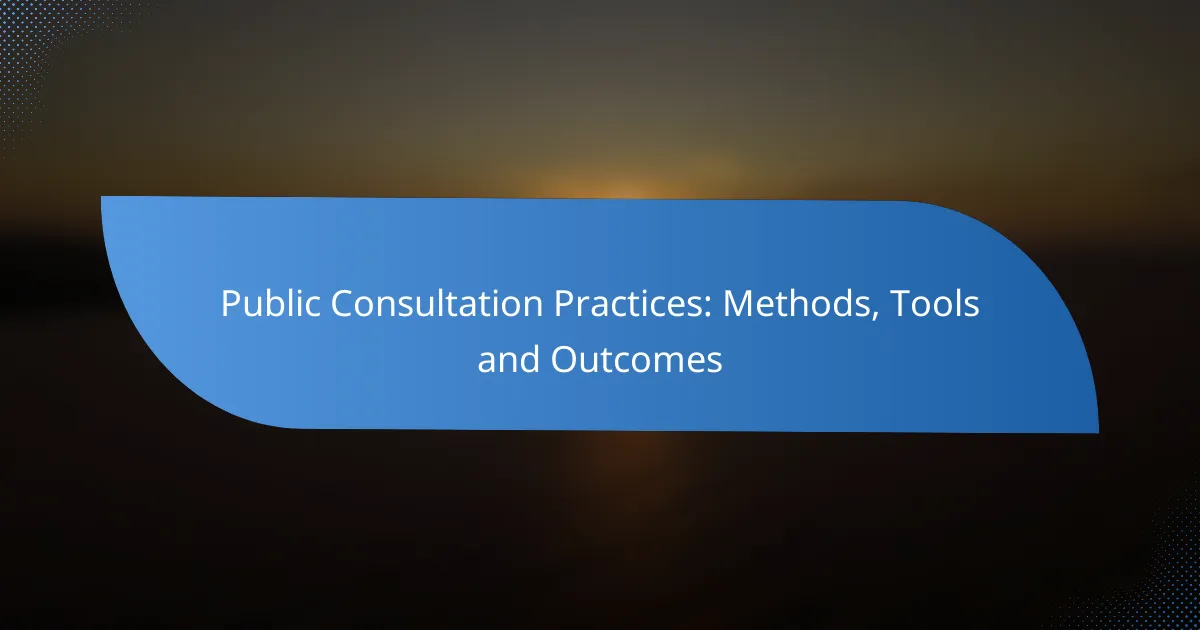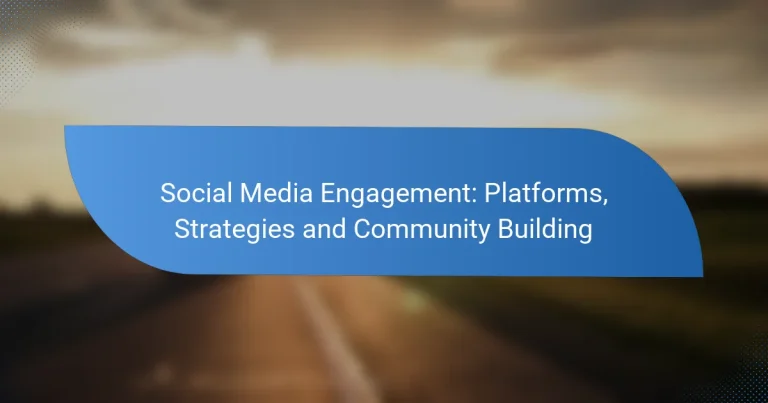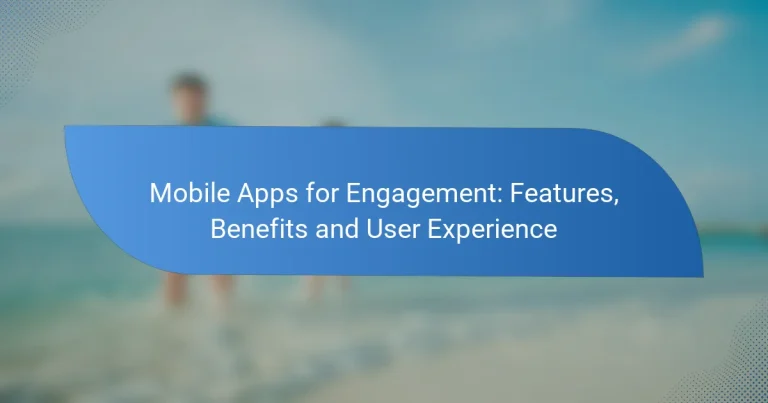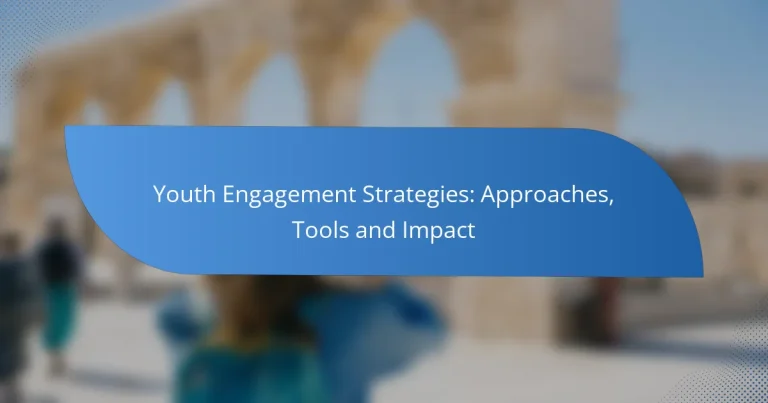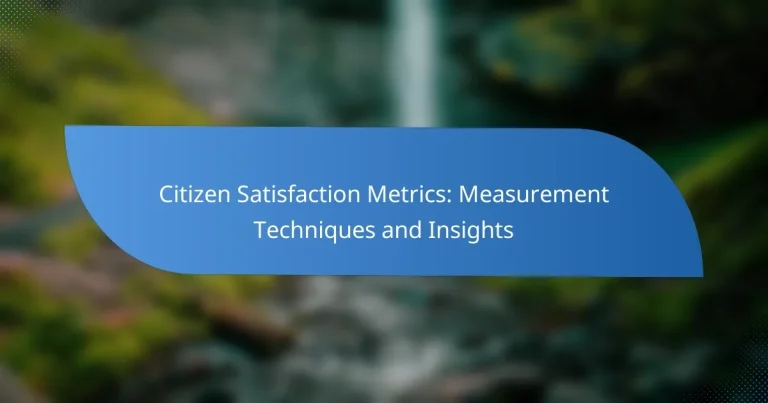Public Consultation Practices: Methods, Tools and Outcomes
Public consultation practices are essential for engaging stakeholders and gathering valuable feedback that informs decision-making. By utilizing various methods and tools, organizations can streamline communication and enhance data collection, ensuring that diverse perspectives are considered. Ultimately, effective public consultation leads to improved policy outcomes and greater community involvement.
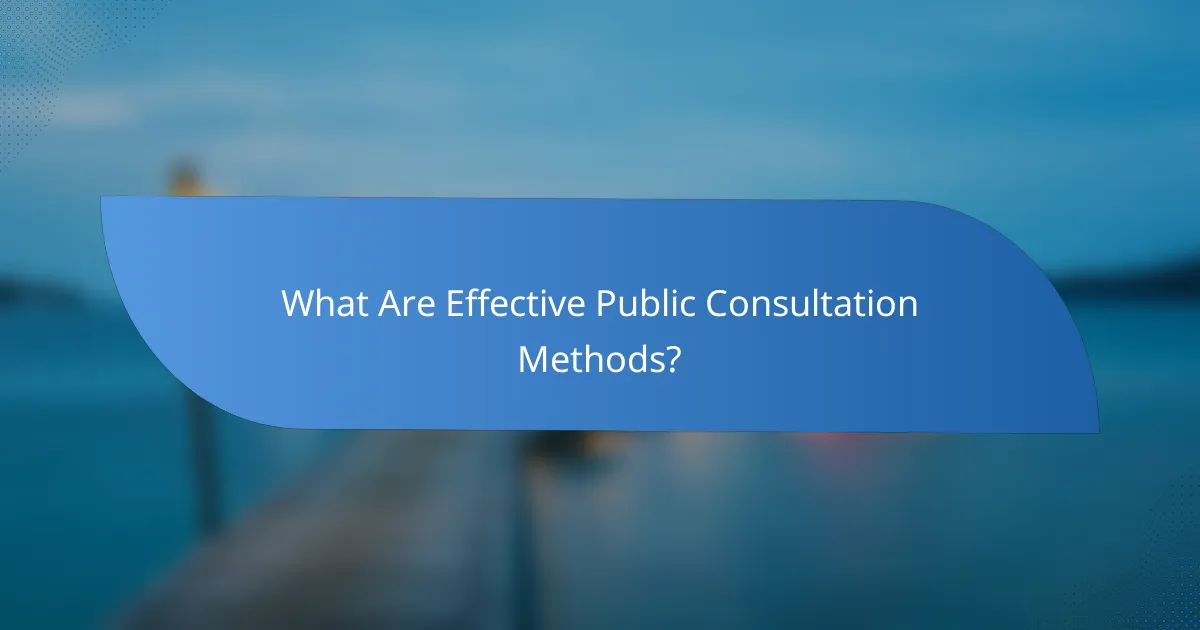
What Are Effective Public Consultation Methods?
Effective public consultation methods engage stakeholders and gather valuable feedback to inform decision-making. These methods vary in approach, allowing organizations to choose the most suitable options based on their goals and audience.
Surveys and Questionnaires
Surveys and questionnaires are structured tools designed to collect quantitative and qualitative data from participants. They can be distributed online or in paper format, making them accessible to a wide audience.
When creating surveys, focus on clear and concise questions to avoid confusion. Use a mix of multiple-choice and open-ended questions to gather diverse insights. Aim for a response rate of at least 20-30% for meaningful results.
Focus Groups
Focus groups involve small, diverse groups of participants discussing specific topics guided by a facilitator. This method allows for in-depth exploration of opinions and feelings, providing rich qualitative data.
When organizing focus groups, select participants who represent different perspectives. Limit group sizes to 6-10 individuals to encourage participation. Prepare open-ended questions to stimulate discussion and capture a range of views.
Public Meetings
Public meetings are gatherings where stakeholders can voice their opinions and ask questions about proposed projects or policies. These meetings foster transparency and community engagement.
To maximize attendance, schedule public meetings at convenient times and locations. Use visual aids like slides or posters to present information clearly. Encourage open dialogue by allowing ample time for questions and comments from attendees.
Online Platforms
Online platforms facilitate public consultation through digital means, allowing for broader participation. These platforms can include social media, dedicated websites, or online forums.
When using online platforms, ensure they are user-friendly and accessible to all demographics. Promote the platform through various channels to reach a wider audience. Monitor interactions and respond promptly to maintain engagement and trust.
Workshops
Workshops are interactive sessions that bring stakeholders together to collaborate on specific issues or projects. They encourage hands-on participation and can lead to innovative solutions.
To conduct effective workshops, define clear objectives and outcomes. Use activities like brainstorming or role-playing to stimulate creativity. Limit group sizes to enhance interaction and ensure everyone has a chance to contribute.
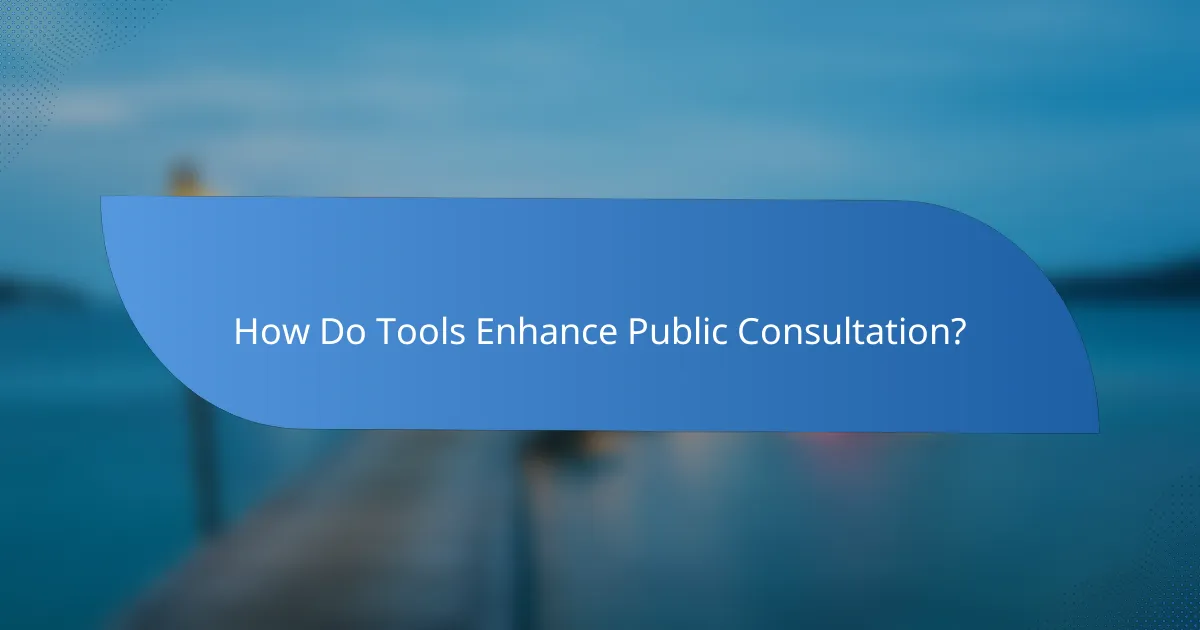
How Do Tools Enhance Public Consultation?
Tools enhance public consultation by streamlining communication, improving data collection, and facilitating analysis. They enable stakeholders to engage effectively, ensuring that diverse perspectives are considered in decision-making processes.
Collaboration Software
Collaboration software allows participants to share ideas, documents, and feedback in real-time, fostering a more inclusive consultation environment. Platforms like Slack, Microsoft Teams, or dedicated tools like Miro can facilitate discussions and brainstorming sessions.
When selecting collaboration software, consider user accessibility and integration with existing systems. Ensure that all stakeholders, including those less tech-savvy, can easily navigate the platform to contribute meaningfully.
Data Analysis Tools
Data analysis tools help organizations interpret feedback and identify trends from public consultations. Software like Excel, SPSS, or Tableau can process qualitative and quantitative data, turning raw information into actionable insights.
To maximize the effectiveness of data analysis tools, establish clear metrics for evaluation early in the consultation process. This approach helps in understanding public sentiment and prioritizing issues based on community needs.
Visualization Tools
Visualization tools transform complex data into easily digestible formats, making it simpler for stakeholders to understand outcomes. Tools such as Infogram or Google Data Studio can create charts, graphs, and infographics that illustrate key findings from consultations.
Effective visualization should prioritize clarity and relevance. Use color coding and simple layouts to highlight important data points, ensuring that the visualizations communicate the intended message without overwhelming the audience.
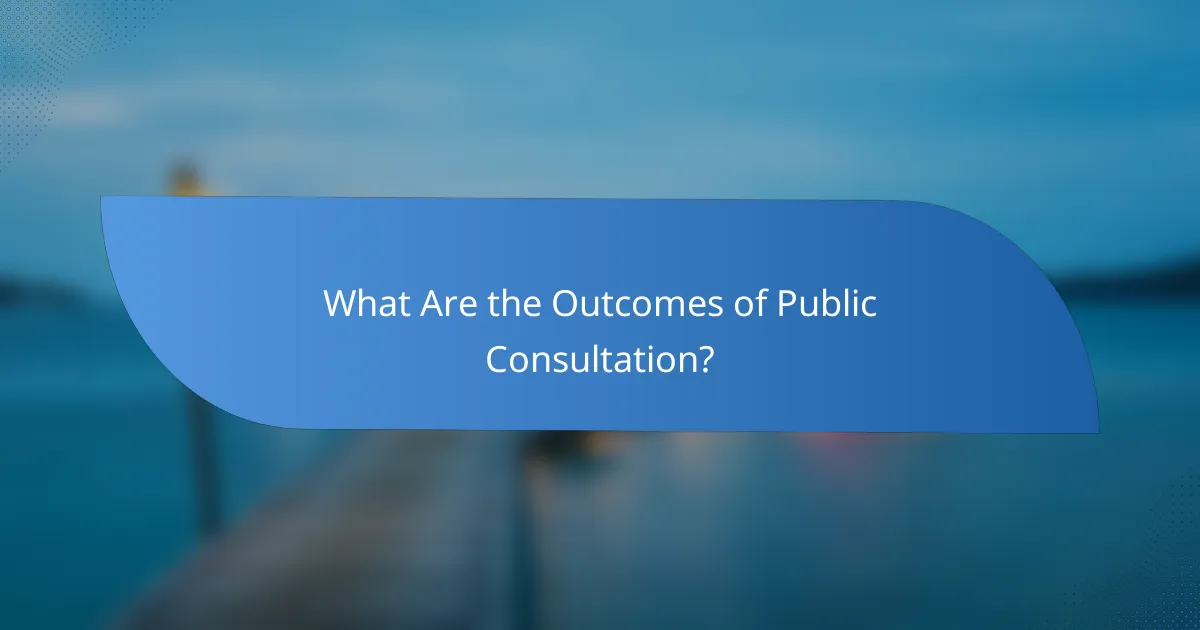
What Are the Outcomes of Public Consultation?
Public consultation typically leads to enhanced decision-making, greater community involvement, and improved policy results. These outcomes stem from engaging stakeholders in the decision-making process, allowing for diverse perspectives and informed choices.
Improved Decision-Making
Effective public consultation fosters better decision-making by incorporating input from various stakeholders. This collaborative approach helps identify potential issues early and ensures that decisions reflect community needs and priorities.
For instance, when local governments seek feedback on urban development plans, they can adjust proposals based on residents’ concerns, leading to more acceptable and sustainable outcomes. Engaging the public can reduce the likelihood of costly revisions later in the process.
Increased Community Engagement
Public consultation encourages community engagement by inviting citizens to participate in discussions that affect their lives. This involvement can take many forms, such as surveys, town hall meetings, or online forums, making it easier for people to share their opinions.
When communities feel heard, they are more likely to support initiatives and participate in local governance. For example, a neighborhood association that actively seeks resident feedback on local projects often sees higher attendance at meetings and increased volunteerism.
Better Policy Outcomes
By integrating public input, policy outcomes can be significantly improved. Policies developed through consultation are often more effective and widely accepted, as they address the actual needs and concerns of the community.
For example, a city that consults residents on public transportation improvements can create a system that better serves commuters, ultimately leading to increased ridership and satisfaction. Additionally, policies shaped by public feedback are less likely to face opposition, facilitating smoother implementation.
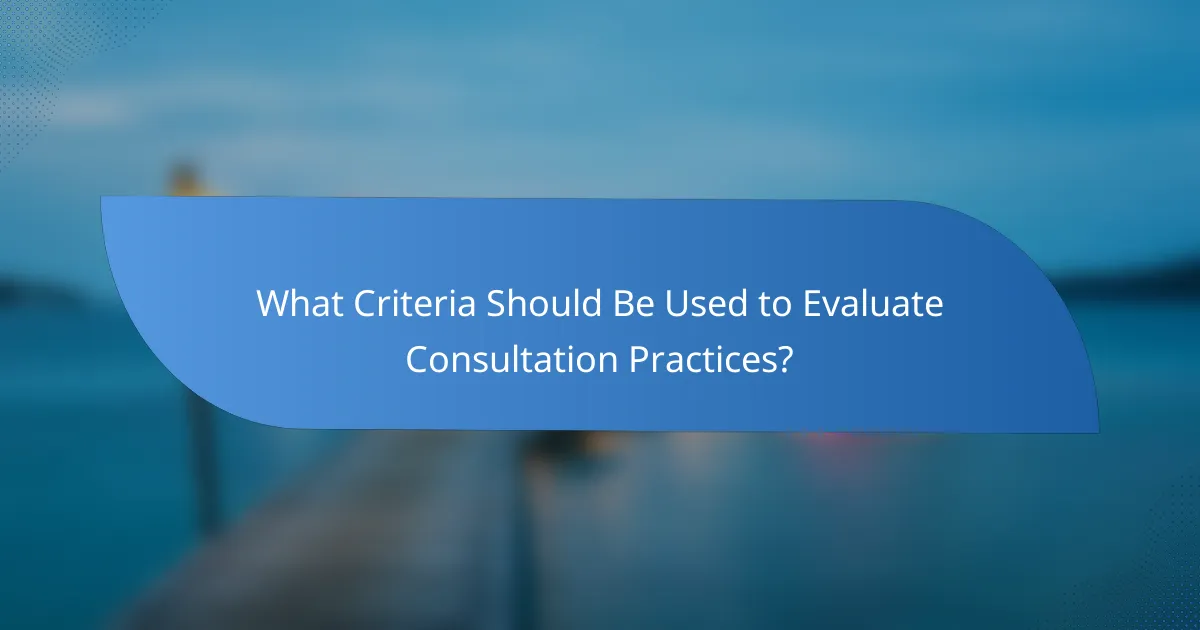
What Criteria Should Be Used to Evaluate Consultation Practices?
To evaluate consultation practices effectively, consider criteria such as stakeholder feedback, engagement metrics, and overall outcomes. These factors help determine the success and impact of the consultation process on decision-making and community involvement.
Stakeholder Feedback
Stakeholder feedback is essential for assessing how well consultation practices meet the needs of the community. Collecting input through surveys, interviews, or focus groups can provide valuable insights into participants’ experiences and satisfaction levels. Aim for a diverse representation of stakeholders to ensure a comprehensive understanding of perspectives.
When analyzing feedback, look for common themes and specific suggestions for improvement. This qualitative data can guide adjustments to future consultations, making them more inclusive and effective. Regularly soliciting feedback helps build trust and encourages ongoing participation.
Engagement Metrics
Engagement metrics quantify participation levels and the effectiveness of consultation practices. Key metrics include attendance rates, the number of submissions received, and the diversity of participants. Tracking these figures over time can reveal trends and highlight areas for enhancement.
Consider using tools such as online platforms to gather data on engagement. For instance, measuring the percentage of participants who actively contribute comments or questions can indicate the level of interest and investment in the process. Regularly reviewing these metrics allows organizations to adapt their strategies and improve future consultations.
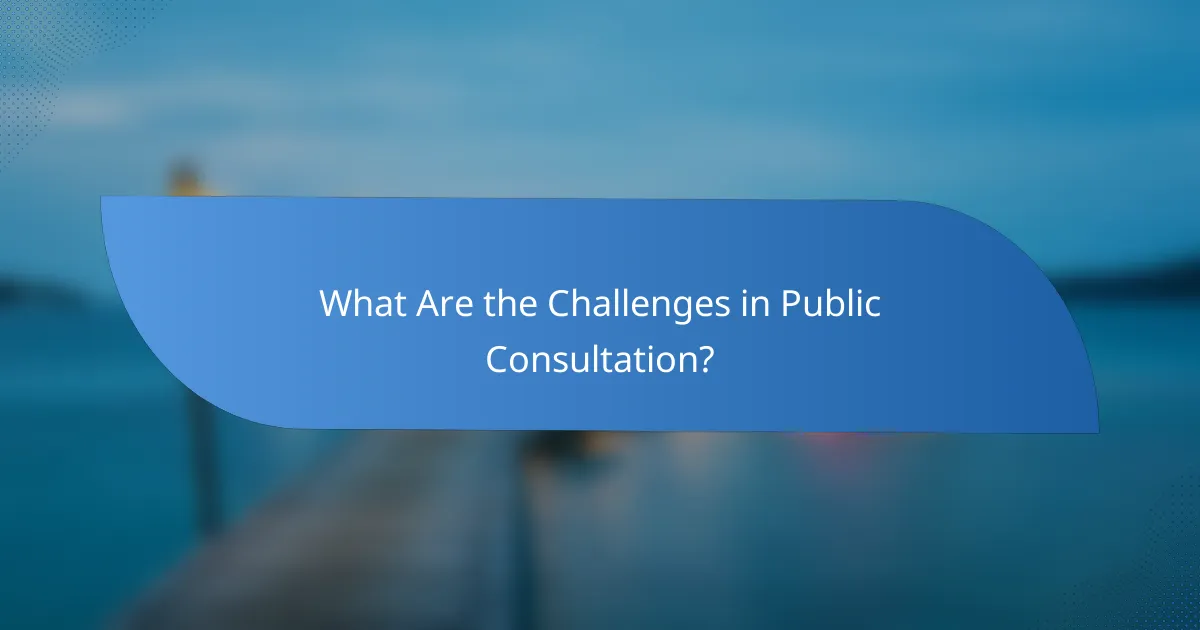
What Are the Challenges in Public Consultation?
Public consultation faces several challenges that can hinder effective engagement and feedback. Key issues include limited participation, inadequate communication, and difficulties in managing diverse opinions.
Limited Participation
Limited participation occurs when only a small segment of the community engages in the consultation process. This can lead to skewed results that do not accurately reflect the views of the wider population.
To enhance participation, consider using multiple outreach methods such as online surveys, public meetings, and social media campaigns. Offering incentives, like gift cards or community recognition, can also encourage broader involvement.
Common pitfalls include relying solely on traditional methods, which may not reach younger or more diverse audiences. Aim for a mix of approaches to ensure inclusivity and gather a representative sample of opinions.
